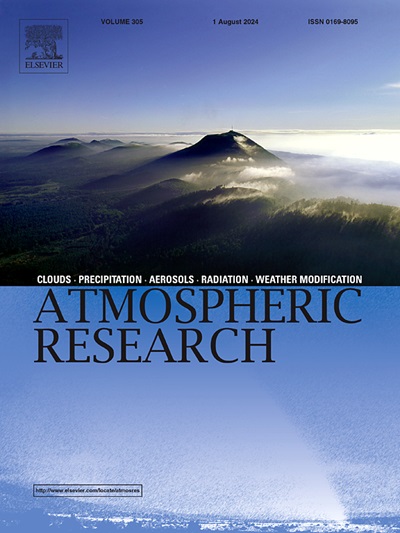Understanding the dynamics of 2024 extreme heat event in India: Spatial variability, hydrometeorological impacts, and model evaluation
IF 4.5
2区 地球科学
Q1 METEOROLOGY & ATMOSPHERIC SCIENCES
引用次数: 0
Abstract
Heatwaves are becoming more intense, frequent, and prolonged due to global warming, posing significant risks to ecosystems and human societies. Despite their profound impact, detailed regional assessments of extreme heat events remain limited, particularly in India. This study addresses the gap by systematically investigating the 2024 extreme heat event in India. We evaluated the performance of various land surface schemes in simulating heat extremes using the Weather Research and Forecasting model and also assessed the accuracy of Global Forecast System (GFS) forecasts. Our analysis reveals a strong co-occurrence of drought and heat stress during the extreme heat event. This combination results in increased fire risk and negative impacts on vegetation productivity in regions affected by both drought and heat stress highlighting the severe consequences of this compound event. We compare different land surface models (RUC, Noah, Noah-MP, Noah-MP with dynamic vegetation, CLM) against India Meteorological Department (IMD) observations. We observe that Noah is optimal for reducing bias and RMSE, while Noah-MP with dynamic vegetation is most accurate for simulating extreme heat, with the highest hit rate and threat score for the 90th percentile threshold. Additionally, GFS maximum temperature forecasts for 1–3 day lead times perform well at short lead times, especially in Southern India but overestimate temperatures in heatwave-prone regions like the Indo-Gangetic Plains. Our findings highlight the importance of enhancing land surface models and forecasting systems to better predict extreme heat events, which is crucial for localized hazard and risk assessments and improving disaster management efficiency.

了解2024年印度极端高温事件的动态:空间变异性、水文气象影响和模式评估
由于全球变暖,热浪变得更加强烈、频繁和持久,对生态系统和人类社会构成重大风险。尽管其影响深远,但对极端高温事件的详细区域评估仍然有限,特别是在印度。本研究通过系统调查2024年印度的极端高温事件来解决这一差距。我们利用天气研究与预报模式评估了不同地表方案在模拟极端高温方面的表现,并评估了全球预报系统(GFS)预报的准确性。我们的分析表明,在极端高温事件期间,干旱和热应激强烈共存。在受干旱和热胁迫影响的地区,这种组合导致火灾风险增加,并对植被生产力产生负面影响,突出了这种复合事件的严重后果。我们将不同的陆面模型(RUC、Noah、Noah- mp、Noah- mp与动态植被、CLM)与印度气象部门(IMD)的观测结果进行了比较。结果表明,Noah模型在减少偏差和RMSE方面最优,而带动态植被的Noah- mp模型在模拟极端高温方面最准确,命中率和威胁得分在第90百分位阈值处最高。此外,GFS对1-3天交货时间的最高温度预报在较短的交货时间内表现良好,特别是在印度南部,但在印度-恒河平原等热浪易发地区,温度估计过高。我们的研究结果强调了加强陆地表面模型和预测系统以更好地预测极端高温事件的重要性,这对于局部灾害和风险评估以及提高灾害管理效率至关重要。
本文章由计算机程序翻译,如有差异,请以英文原文为准。
求助全文
约1分钟内获得全文
求助全文
来源期刊

Atmospheric Research
地学-气象与大气科学
CiteScore
9.40
自引率
10.90%
发文量
460
审稿时长
47 days
期刊介绍:
The journal publishes scientific papers (research papers, review articles, letters and notes) dealing with the part of the atmosphere where meteorological events occur. Attention is given to all processes extending from the earth surface to the tropopause, but special emphasis continues to be devoted to the physics of clouds, mesoscale meteorology and air pollution, i.e. atmospheric aerosols; microphysical processes; cloud dynamics and thermodynamics; numerical simulation, climatology, climate change and weather modification.
 求助内容:
求助内容: 应助结果提醒方式:
应助结果提醒方式:


